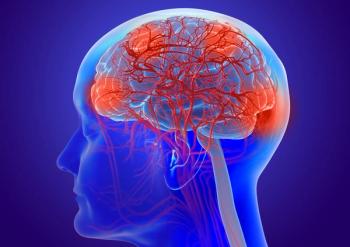
Concurrent Chemoradiotherapy Better in Biopsy-Only GBM Patients
Combined temozolomide and radiotherapy offer significantly better overall survival than radiotherapy alone in patients with glioblastoma multiforme (GBM) who undergo biopsy only rather than surgical resection.
Combined temozolomide and radiotherapy offer significantly better overall survival than radiotherapy alone in patients with glioblastoma multiforme (GBM) who undergo biopsy only rather than surgical resection, according to a new study.
Though optimal GBM treatment currently includes maximal safe surgical resection, about 15% to 20% of patients do not undergo any resection because of poor performance status, multifocal disease, or other contraindications. “It is known that the extent of surgical resection has a significant impact on patient prognosis, but it is less clear whether patients with GBM who only undergo biopsy receive a significant survival benefit from concurrent chemoradiotherapy (CRT) over radiotherapy (RT) alone,” wrote study authors led by James B. Yu, MD, of Yale School of Medicine in New Haven, Connecticut.
In the new study, researchers identified 1,479 GBM patients in the US National Cancer Data Base (NCDB) who had a biopsy-only procedure and who then received either RT alone (154 patients; 10.4%) or CRT (1,325 patients; 89.6%). The results were
Patients who received CRT had significantly better overall survival than those who received RT alone, at 9.2 months vs 5.6 months (P < .0001). The significant difference was observed as early as 6 months after diagnosis and persisted through 24 months, beyond which survival was poor in both groups.
On a multivariate analysis, CRT remained independently associated with improved overall survival compared with RT alone, with an adjusted hazard ratio (HR) of 0.71 (95% CI, 0.60–0.85; P < .001). Younger age (< 70 years) was also associated with improved survival, as was RT beginning more than 30 days after diagnosis.
The authors confirmed the finding by using a propensity matched score analysis for patient age, sex, race, Charlson/Deyo score, and time from diagnosis to RT initiation. Based on this analysis, the median overall survival in CRT patients was 8.4 months, compared with 5.7 months in RT-alone patients, for an HR of 0.72 (95% CI, 0.56–0.93; P = .009).
The study was limited by its retrospective nature, with a “strong potential” for selection bias. For example, elderly patients are more likely to receive RT alone, which could skew the survival against that therapy in spite of the adjustments done in this analysis.
“Patients with biopsy-only GBM are relatively common in clinical settings,” the authors wrote, noting that within the NCDB about 20% of patients with GBM did not undergo surgical resection. “Although survival remains particularly poor for this challenging subgroup, our findings support CRT as the continued standard of care for patients with biopsy-only GBM.”
Newsletter
Stay up to date on recent advances in the multidisciplinary approach to cancer.





![According to John Henson, MD, “What we need are better treatments to control the [brain] tumor once it’s detected.”](https://cdn.sanity.io/images/0vv8moc6/cancernetwork/e0d29c38bb732429ae370e4ef7d1829a10c96446-2992x1684.png?w=350&fit=crop&auto=format)